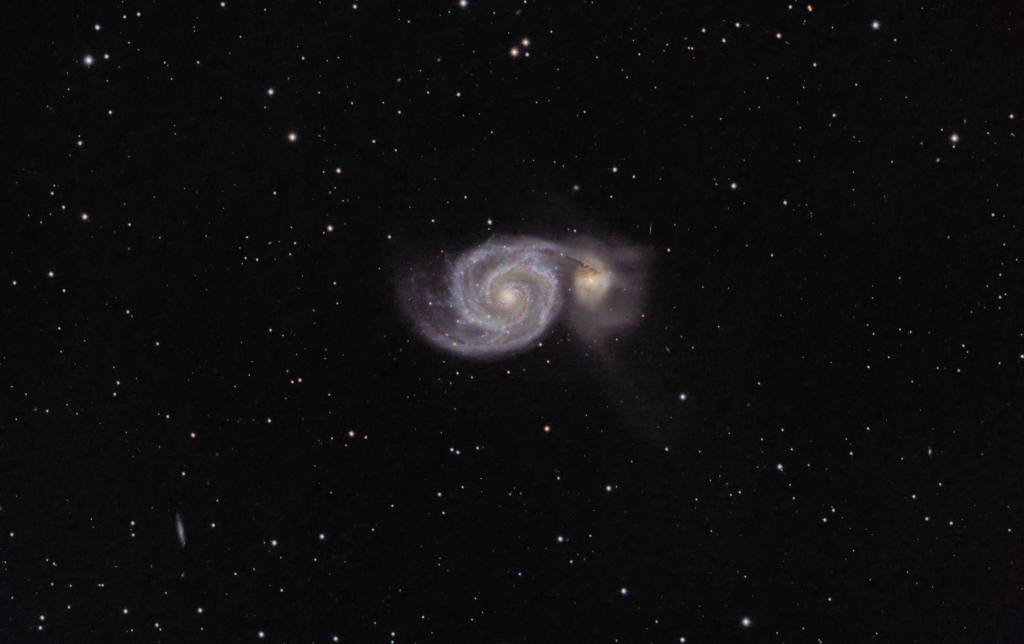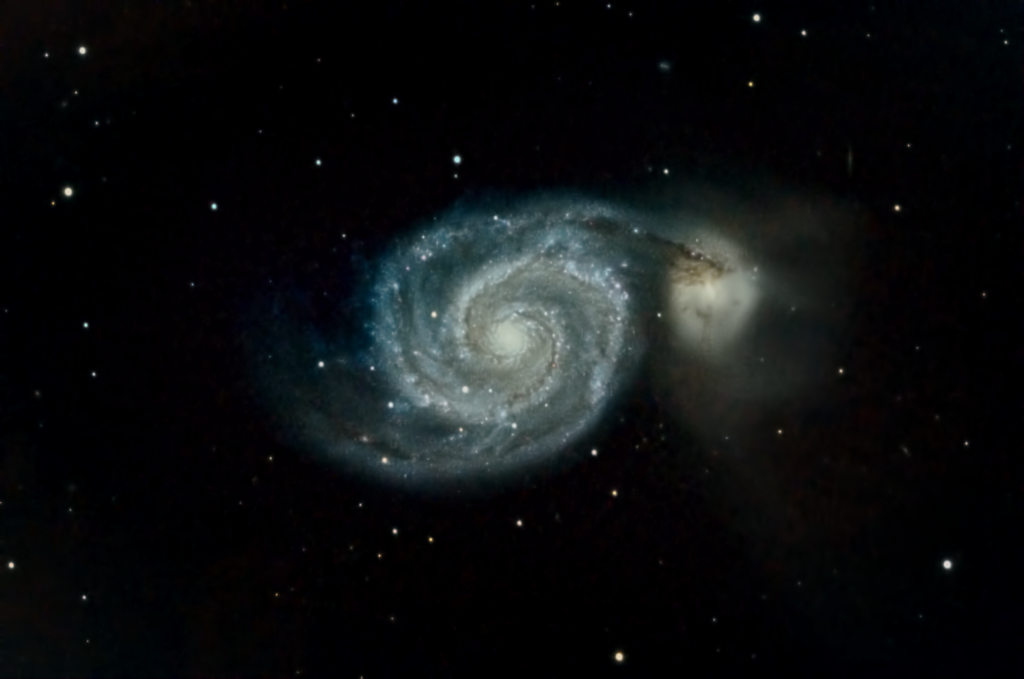
Similar Posts

The Bubble Nebula, take… whatever
Every year I try and do a better job of capturing and processing the Bubble Nebula in Cassiopeia. Here’s this year’s attempt. The Bubble Nebula is one of my favorite objects. Not only is it interesting scientifically (the bubble is the stellar wind of a hot O-type star blowing away the surrounding gases,) it’s also…

The Flaming Star Nebula
Kind of an interesting framing on this one – it looks like it’s reaching out! This is narrowband emissions, in the Hubble Sulphur/Hydrogen/Oxygen palette. Some say there’s no Oxygen emission in this one, but with enough determination I pulled it out – that’s what results in the purples and blues you see here.

NGC2903 feels lonely.
It’s a good thing galaxies don’t have feelings; they’re just collections of billions of stars. Because NGC 2903 would need therapy. It has no cute nickname like other galaxies; it’s just NGC 2903. And it has no galactic neighbors; most galaxies are gravitationally bound to other galaxies in their local group or cluster, but NGC…

M64, The “Black Eye Galaxy”
Combining 25 hours of data shot over two years, here’s M64. It’s an odd one, with counter-rotating disks that seem to have funneled all that dust in the center there. They think it’s the result of a merger of two galaxies that were spinning in opposite directions. Located about 17 million light-years away, in the…

The galaxy M91
Located 63 million light-years away in the constellation Coma Berenices, M91 is part of the Virgo cluster of galaxies – and if you zoom in and explore this image, you’ll find many other galaxies surrounding it, and also far in the distance beyond it.

M106 and some of its buddies
The galaxy M106 is an interesting one; it’s large and relatively bright – about the same size as Andromeda. And it’s in a busy part of the sky, within Canes Venatici, with lots of galactic neighbors. This image has been enhanced with Hydrogen emission data; that’s what the red dots and tendrils are. There’s one…


